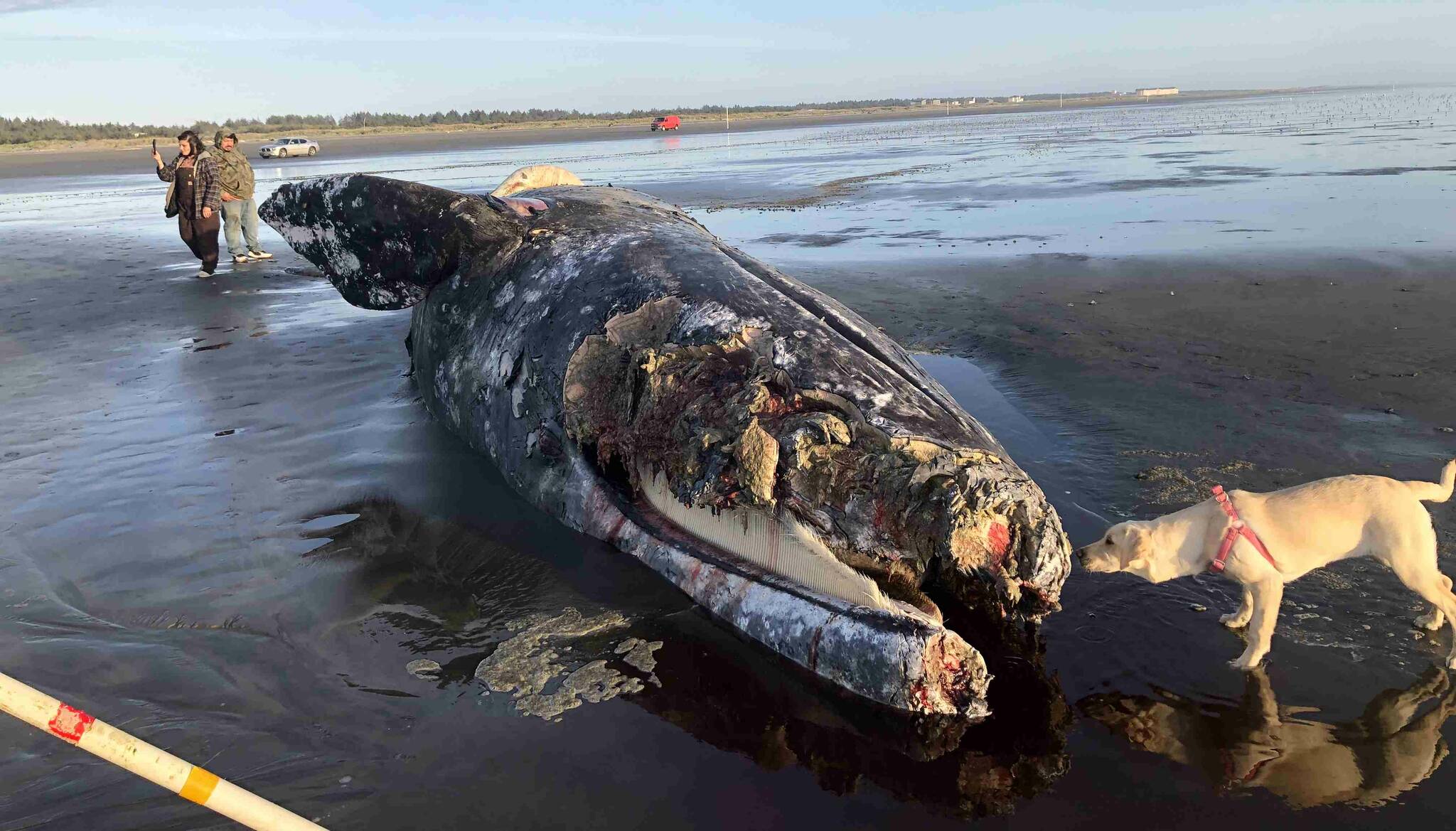The cause of death for a gray whale that washed up on a beach just south of Ocean City was unknown shortly after reports came in Wednesday evening.
Marine mammal officials planned to perform a necropsy Friday morning on the carcass, which settled a few hundred yards south of the Ocean City beach access, about a mile north of the Quinault casino.
Scientists planned to use the necropsy, which occurred after The Daily World’s deadline for the April 13 issue, to determine what killed the male gray whale.
The whale carcass fell within the jurisdiction of the Cascadia Research Collective, a nonprofit partner in the network of groups that respond to marine mammal strandings on the West Coast. The group determined from photos that the carcass was a male gray whale.
“It is fairly decomposed,” said Jessie Huggins, a coordinator with Cascadia Research Collective. As of Thursday, a portion of the whale’s jaw was missing. “Unless it’s something really obvious, we may not be able to determine a cause of mortality for this one.”
Huggins said the recent stranding is the first dead whale her group has responded to on the outer coast in 2024.
West Coast gray whale populations are rebounding from an unusual mortality event that began in 2019 and officially ended in November 2023. According to the National Oceanic and Atmospheric Administration, the North Pacific gray whale population during that time period dropped from more than 20,000 whales to fewer than 15,000.
34 gray whales washed up on Washington beaches in 2019 compared to 13 last year. The whales pass by Washington during seasonal migrations from Northern Mexico to Alaska and the Arctic.
The mortality event produced nearly 700 strandings in that range. Necropsy findings pointed to starvation as a common killer, while vessel strikes, predation and entanglement also contributed, NOAA stated in a summary last month.
An October 2023 study from researchers at Oregon State University linked boom and bust cycles in gray whale populations to changing sea ice conditions in arctic feeding grounds. By combining data from past mortality events in the 1980s and 90’s with environmental data about ice cover, researchers found that years with less summer sea ice in the Arctic provided more foraging opportunities for whales.
But long-term depletion of sea ice driven by warming temperatures likely won’t benefit whales. Algae, which clings to sea ice, is two steps below the gray whale in the food chain — and essential to the growth of a favorite prey.
While future sea ice fluctuations may change the number of whales the Arctic food supply can support, the current mortality event ended because stranding rates returned to normal levels, according to NOAA.
“It doesn’t mean we aren’t going to be seeing any more dead gray whales,” Huggins said.
Huggins said Washington State Parks will determine the next course of action for the whale carcass.
Federal law prohibits removing parts from carcasses of gray whales, which are protected under the Marine Mammal Protection Act.
Contact reporter Clayton Franke at 406-552-3917 or clayton.franke@thedailyworld.com.


